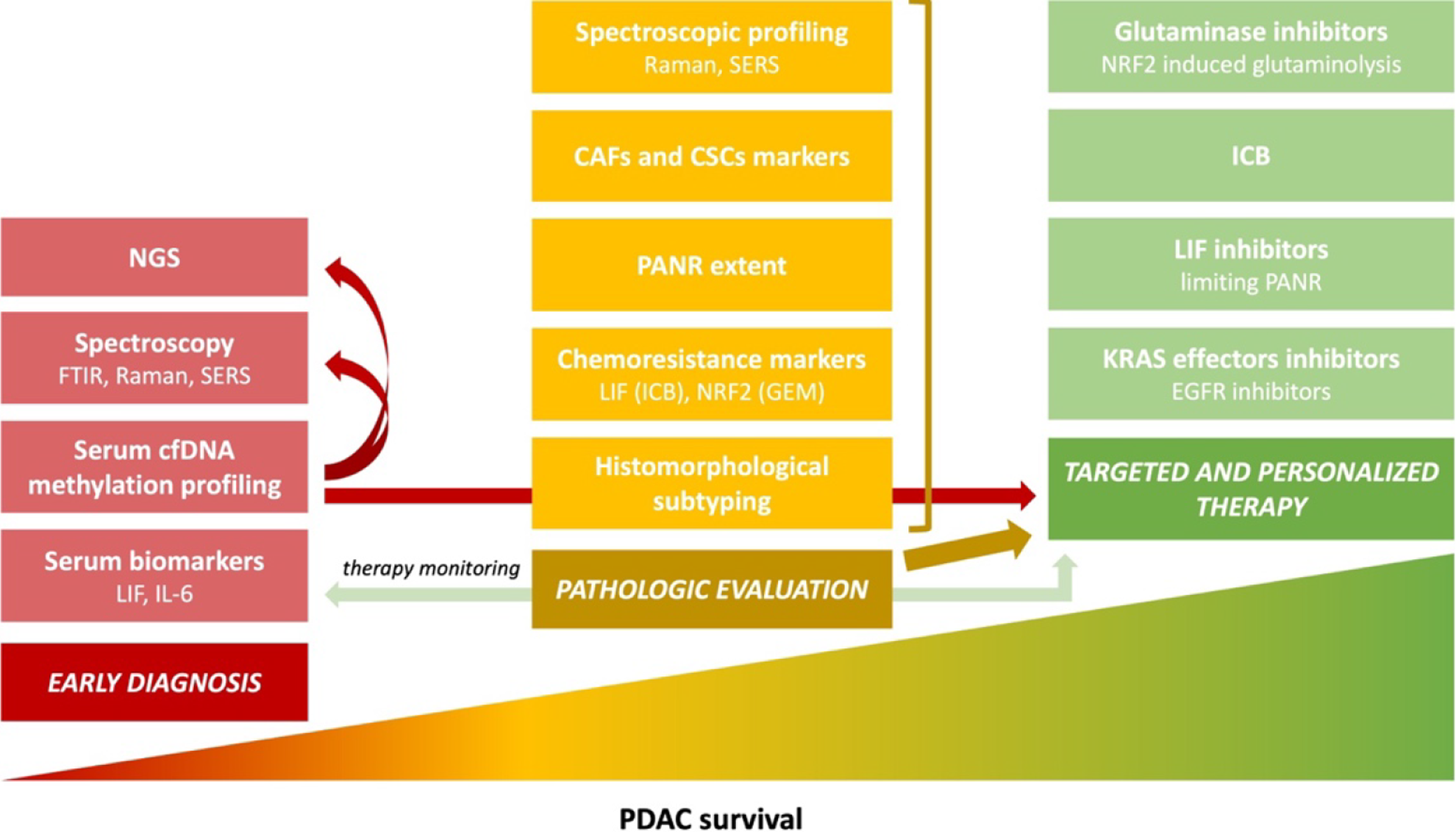Copyright
©The Author(s) 2023.
World J Gastroenterol. Jan 7, 2023; 29(1): 96-109
Published online Jan 7, 2023. doi: 10.3748/wjg.v29.i1.96
Published online Jan 7, 2023. doi: 10.3748/wjg.v29.i1.96
Figure 1 Main trends in pancreatic cancer pathology and research aim to improve survival[3].
Poor pancreatic ductal adenocarcinoma (PDAC) prognosis for a patient is multifactorial, and the lack of sensitive and specific early diagnostic methods is one of the reasons. Another is the resistance to available therapeutic options, which is caused, among others, by the tumor's molecular and morphological heterogeneity. Detailed pathological reporting is crucial for targeted and personalized therapy. The development of new diagnostic methods, combined with a proper pathologic evaluation and spectroscopic profiling, lead to effective treatment and supposedly will increase PDAC patients’ survival rates; Adapted with permission from[3]. Citation: Szymoński K, Milian-Ciesielska K, Lipiec E, Adamek D. Current Pathology Model of Pancreatic Cancer. Cancers (Basel) 2022; 14: 2321. Copyright© The Authors 2020. Published by MDPI. The image may be redistributed without special permissions–source: https://www.mdpi.com/openaccess. PDAC: Pancreatic ductal adenocarcinoma; LIF: Leukemia inhibitory factor; IL-6: Interleukin-6; cfDNA: Cell-free DNA; FTIR: Fourier transform infrared spectroscopy; Raman: Raman spectroscopy; SERS: Surface-enhanced Raman spectroscopy; NGS: Next-generation sequencing; ICB: Immune checkpoint blockers; NRF2: Nuclear factor-erythroid factor 2-related factor 2; GEM: Gemcitabine; PANR: PDAC-associated neural remodeling; CAFs: Cancer-associated fibroblasts; CSCs: Cancer stem cells; EGFR: Epithelial growth factor receptor.
- Citation: Szymoński K, Chmura Ł, Lipiec E, Adamek D. Vibrational spectroscopy – are we close to finding a solution for early pancreatic cancer diagnosis? World J Gastroenterol 2023; 29(1): 96-109
- URL: https://www.wjgnet.com/1007-9327/full/v29/i1/96.htm
- DOI: https://dx.doi.org/10.3748/wjg.v29.i1.96









